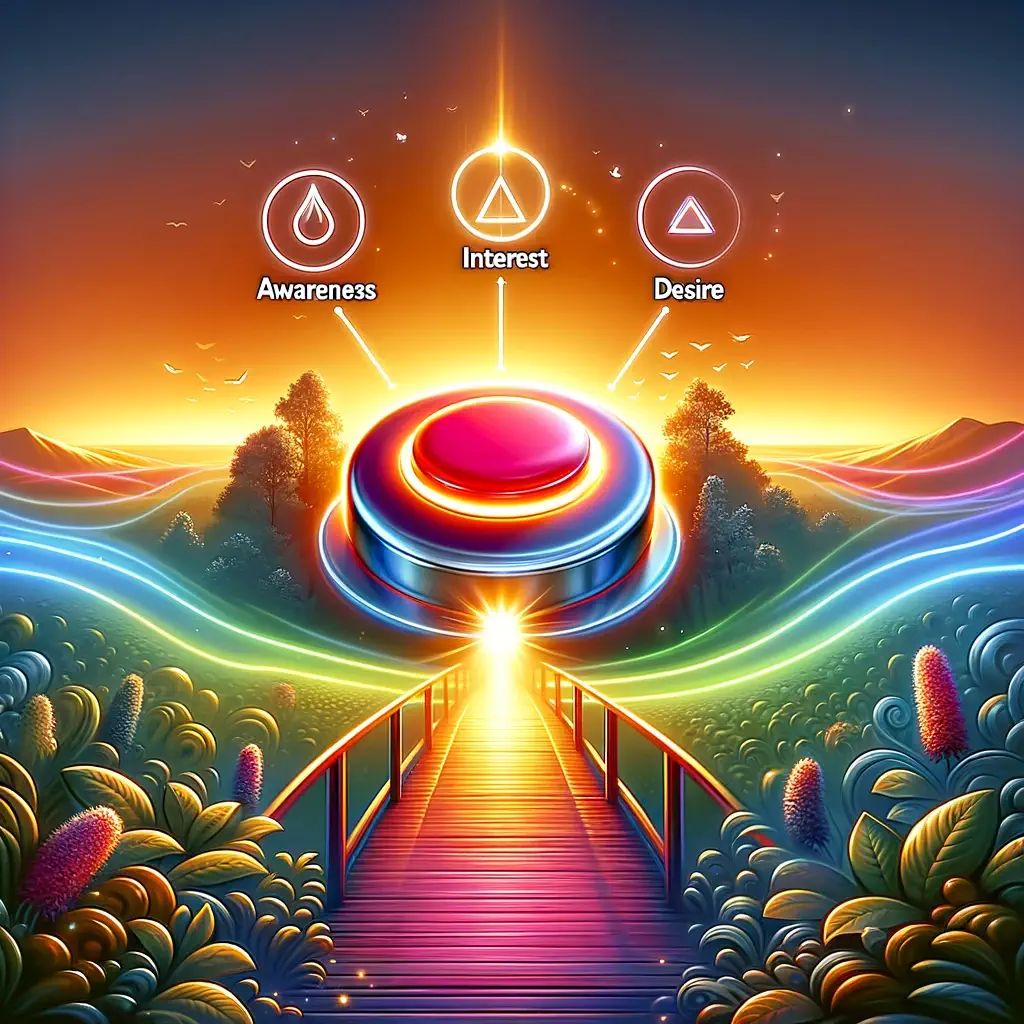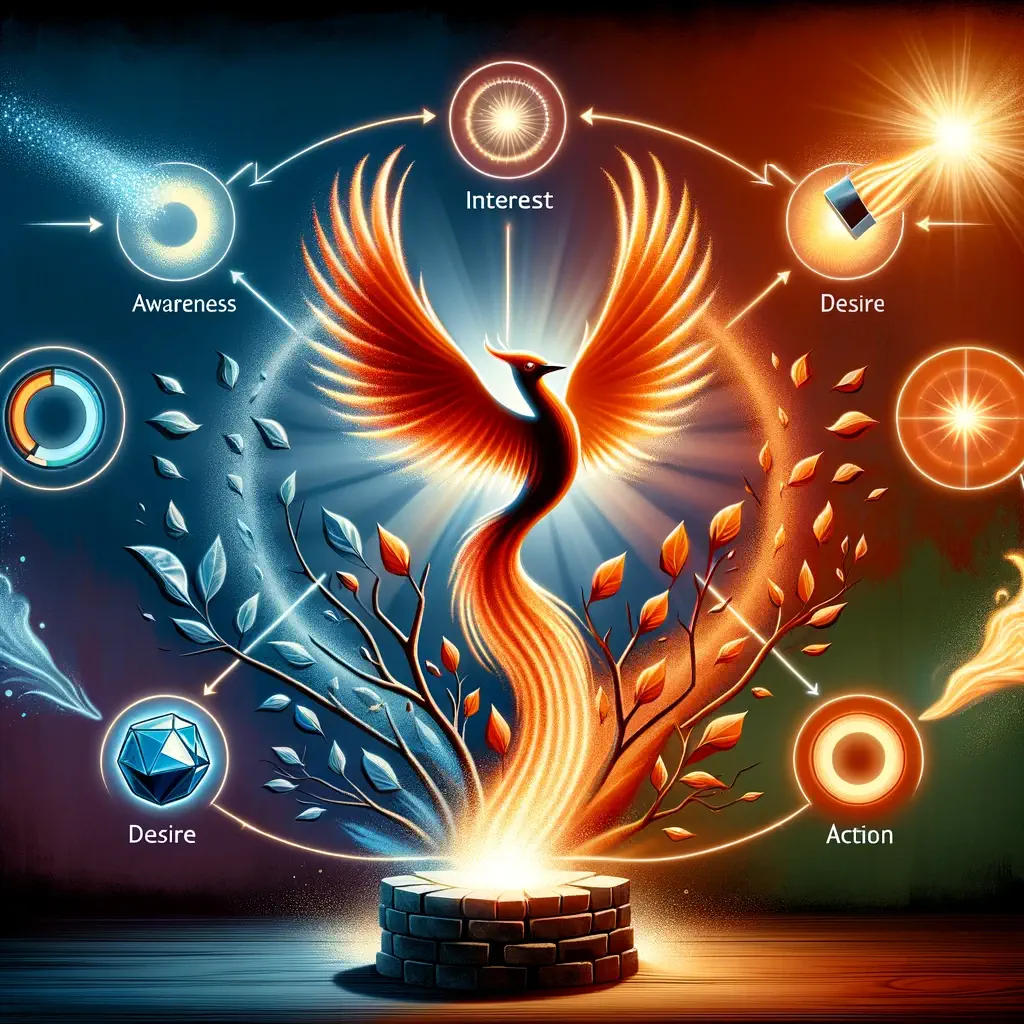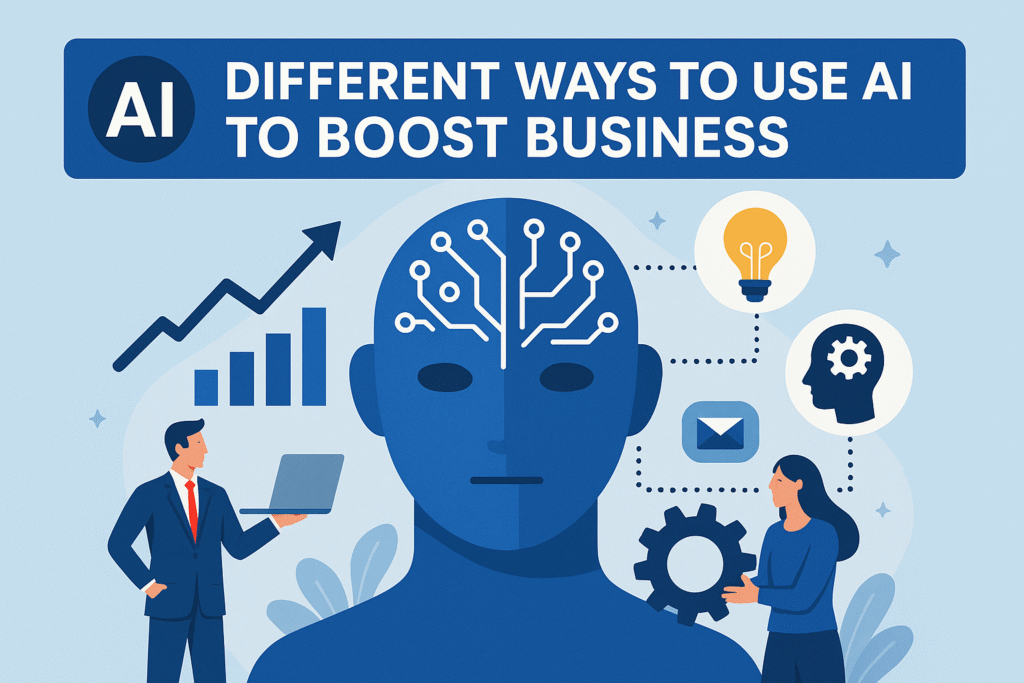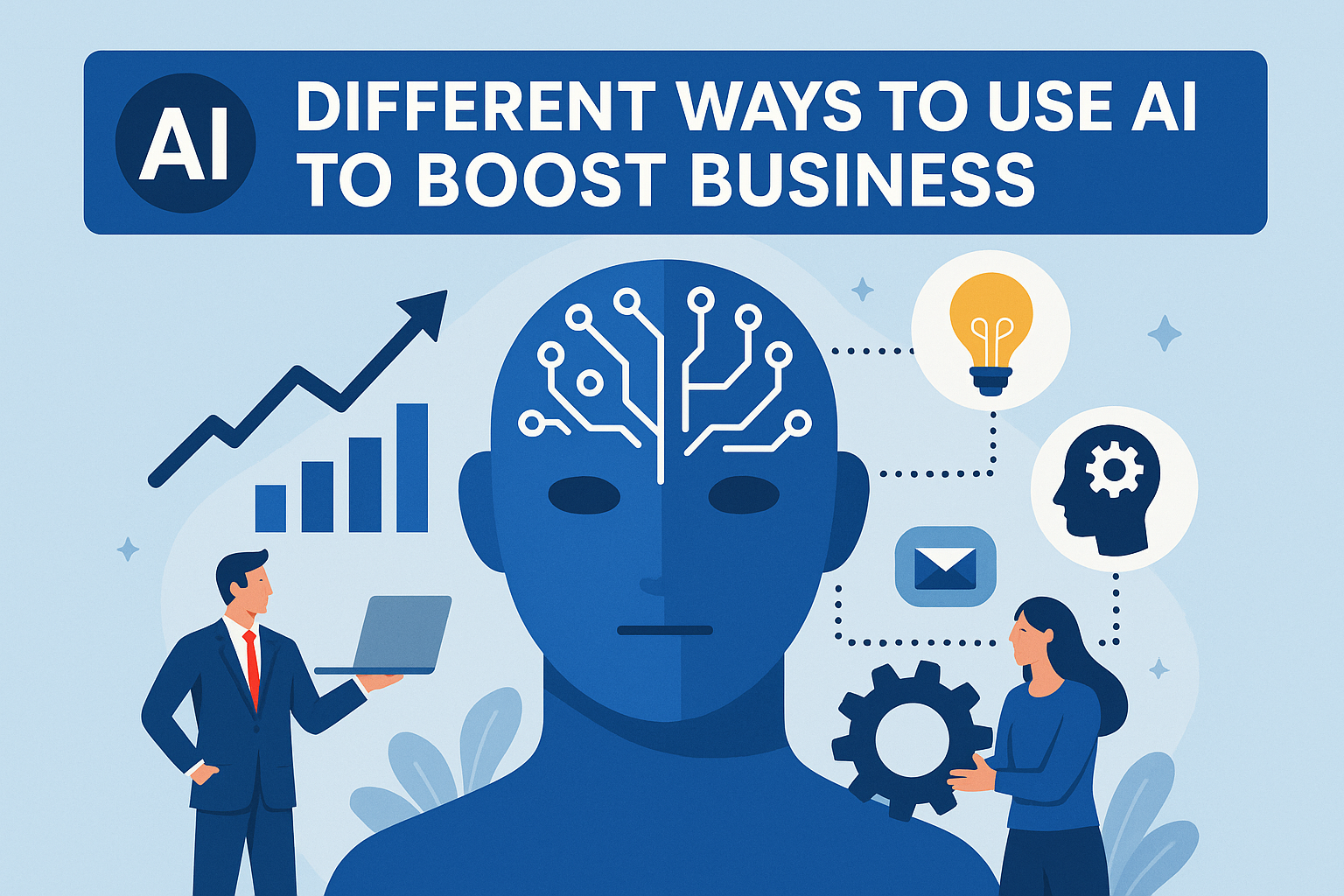What Is AIDA In Marketing [14 Actionable Examples]
Jump To Links
What is AIDA in marketing and why you shouldn’t ignore it!
The AIDA model, standing for Awareness, Interest, Desire, and Action, is a classic marketing framework used to guide the consumer journey from initial awareness to the final action, typically a purchase.
Applying the AIDA model to content revitalization can help make your content more engaging and effective in driving conversions. Here are some topic ideas you can use to explore how to infuse the AIDA model into your content strategies.
So what is AIDA in marketing exactly? Let’s dive right in!

Introduction to the AIDA Model in Content Marketing
- Introduction to the AIDA Model in Content Marketing: A beginner’s guide to understanding how the AIDA model can transform content strategies to better capture and lead the audience through the buying journey.
The AIDA model isn’t just a cornerstone of marketing strategies; it’s the blueprint for digital storytelling that captivates and converts. This proven framework, comprising Awareness, Interest, Desire, and Action, guides marketers in crafting compelling narratives that guide the audience through a seamless journey from discovery to decision.
Awareness: The Gateway to Engagement The first step, Awareness, is where you capture the audience’s attention in the crowded digital landscape. It’s not just about making noise; it’s about making the right noise. Utilize SEO best practices, leveraging targeted keywords like “digital marketing strategies” and “engaging content,” to ensure your message reaches those who seek it.
Interest: Sparking Curiosity Once you’ve got their attention, the challenge is to keep it. This stage is about sparking curiosity with intriguing, relevant content. Dive deep into topics like “consumer behavior insights” and “content personalization” to provide value that piques interest and keeps readers hooked.
Desire: The Emotional Connection Desire is where interest transforms into a personal need or want. This emotional connection is crafted through compelling storytelling, using persuasive copywriting and powerful visuals. Highlight success stories, testimonials, and case studies that resonate with your audience’s aspirations, incorporating keywords like “successful marketing campaigns” and “brand storytelling techniques.”
Action: Turning Intent into Action The final leap from Desire to Action is where true conversion happens. Here, clear, compelling calls-to-action (CTAs) are vital. Encourage engagement with phrases like “Discover more” or “Start your journey today,” making it irresistible for the reader to take the next step.
Incorporating the AIDA model into your content marketing strategy isn’t just about following steps; it’s about weaving a narrative that guides, persuades, and ultimately converts. By integrating SEO-rich keywords and focusing on the unique aspects of your brand’s story, you can create content that not only ranks well in search engines but also genuinely engages and inspires your audience.
Remember, the magic of AIDA lies in its flexibility. Tailor it to your brand’s voice, your audience’s needs, and the unique value you offer. With each piece of content, you’re not just selling a product or service; you’re inviting your audience on a journey that begins with a simple click and ends with a meaningful action.

Crafting Attention-Grabbing Headlines with the AIDA Model
2. Crafting Attention-Grabbing Headlines with the AIDA Model: Techniques for creating compelling headlines that immediately draw readers in, setting the stage for increased awareness of your brand or product.
In the digital era, where every click is contested territory, the art of crafting attention-grabbing headlines is more crucial than ever. Leveraging the AIDA model, specifically the ‘Awareness’ stage, can transform your headlines from mere placeholders into powerful beacons of engagement.
The Science Behind Magnetic Headlines Headlines are the gatekeepers of your content. They decide whether a visitor will dive deeper or scroll away. To penetrate the noise, your headlines must resonate on a psychological level, tapping into the curiosity and interests of your target audience. Integrate SEO-rich phrases like “effective content strategies” and “boost online visibility” to ensure your headlines are not only compelling but also discoverable.
Leveraging AIDA’s ‘Awareness’ for Maximum Impact The ‘Awareness’ stage is about making a memorable first impression. Your headline should act as a spotlight, highlighting the value and relevance of your content. Use action verbs, numbers, or thought-provoking questions to add dynamism and specificity. Phrases like “Top 5 SEO Techniques” or “Why Your Content Marketing Fails” immediately draw attention and intrigue.
The Intersection of Creativity and Strategy An effective headline is a blend of creativity and strategic thinking. It should encapsulate the essence of your content in a way that appeals to both the emotional and rational sides of your audience. Incorporating terms like “game-changing marketing insights” or “revolutionize your digital presence” can pique interest and promise value, encouraging further reading.
Testing and Optimization: The Key to Headline Mastery Crafting the perfect headline is an iterative process. A/B testing different versions can provide valuable insights into what resonates with your audience. Tools like Google Analytics and A/B testing software can help you track engagement metrics, refining your approach to headline creation.
In conclusion, mastering the art of headline writing with the AIDA model is a potent strategy in the content marketer’s arsenal. It’s not just about making bold statements but about making promises that your content faithfully delivers. By weaving SEO keywords like “innovative marketing strategies” and “captivate your target audience” into your headlines, you can ensure they’re not only clickable but also impactful, driving awareness and setting the stage for a deeper engagement with your content.

Building Interest through Engaging Content Narratives
3. Building Interest through Engaging Content Narratives: Strategies for weaving interesting stories or presenting intriguing facts that keep readers engaged and wanting to learn more about your offerings.
In the tapestry of digital content, narratives that resonate deeply with the audience are the threads that weave lasting connections. Engaging content narratives transcend mere information dissemination; they are artful orchestrations of words and visuals that evoke curiosity, empathy, and a sense of discovery. To build genuine interest, one must master the alchemy of storytelling, blending personal insights, data-driven evidence, and imaginative flair.
The Essence of Storytelling in Content Marketing Storytelling is not just an art; it’s a strategic tool that can illuminate complex ideas, humanize brands, and foster an emotional bond with the audience. Integrating elements like “user journeys,” “behind-the-scenes glimpses,” and “customer success stories” into your content can transform passive readers into engaged participants. These narratives should be interwoven with SEO-rich keywords such as “innovative storytelling techniques” and “engagement through narrative” to enhance discoverability and relevance.
Innovating with Formats and Mediums The medium is as pivotal as the message. Diverse formats like interactive infographics, animated explainer videos, and immersive AR experiences can add depth to your narratives, making them more engaging and memorable. Exploring topics like “the power of visual storytelling” or “interactive content strategies” can offer fresh perspectives and innovative approaches to crafting narratives.
Data Narratives: The Intersection of Information and Story In a data-saturated world, presenting facts and figures within compelling narratives can captivate and inform simultaneously. Topics like “data storytelling in marketing” or “converting analytics into narratives” highlight the synergy between data and storytelling, offering a dual appeal of intellectual and emotional engagement.
Cultural Relevance and Authenticity In crafting narratives, the inclusion of culturally relevant themes and authentic voices can significantly amplify interest. Delving into “diversity in storytelling” or “authentic brand narratives” can underscore the importance of inclusivity and genuineness in content creation.
Ethical Storytelling and Its Impact Ethical considerations in storytelling ensure that narratives are respectful, accurate, and positive. Topics such as “ethical storytelling practices” and “the responsibility of content creators” reflect the importance of integrity in narrative-driven marketing.
In conclusion, building interest through engaging content narratives is about much more than just telling a story. It’s about creating a unique, immersive experience that resonates on a personal level, combines factual data with creative expression, and adheres to ethical standards. By crafting narratives that are as informative as they are captivating, content marketers can elevate their strategies, ensuring their messages not only reach their audience but also inspire and engage them in profound ways.

Stoking Desire with Emotional and Rational Appeals
4. Stoking Desire with Emotional and Rational Appeals: Tips on using emotional storytelling or presenting logical solutions to problems to create a strong desire for your products or services.
In the dynamic world of content marketing, the fusion of emotional and rational appeals serves as a powerful catalyst for sparking desire within your audience. This nuanced approach transcends traditional marketing tactics, weaving a narrative that resonates with the audience on a multifaceted level.
Cultivating an Emotional Connection At the heart of every decision lies emotion. Content that evokes an emotional response—be it inspiration, excitement, or even a sense of urgency—creates an immediate connection with the audience. This emotional resonance can be achieved through compelling storytelling, vivid imagery, and relatable scenarios that reflect the audience’s aspirations, fears, and dreams. By tapping into the emotional psyche, marketers can transform passive observers into passionate advocates.
Anchoring with Rational Justification While emotional appeal draws the audience in, rational appeal secures their commitment. This involves presenting clear, objective, and beneficial information that supports the emotional narrative. Detailed infographics, authoritative testimonials, and actionable insights offer the logical evidence that reassures and convinces the audience of the value proposition. This blend of heart and mind ensures that the content not only appeals to the audience’s feelings but also satisfies their intellectual curiosities.
Mastering the Art of Balance The magic lies in the equilibrium. Striking the right balance between emotional and rational appeals requires a deep understanding of your audience’s motivations and barriers. Content that seamlessly integrates emotional narratives with rational evidence creates a compelling reason for the audience to engage, believe, and ultimately, act. This synergy empowers marketers to craft messages that are not only persuasive but also profoundly impactful.
Innovative Approaches to Content Creation Exploring innovative content formats can further enhance the emotional and rational appeal of your messaging. Interactive quizzes that evoke curiosity, VR experiences that offer immersive narratives, and dynamic case studies that combine storytelling with data are just a few examples of how content can be both emotionally engaging and rationally compelling.
Ensuring Originality and Compliance In crafting content that stokes desire through emotional and rational appeals, originality is paramount. Each piece should be a unique reflection of your brand’s values and your audience’s needs, free from clichés and generic messaging. Ensuring compliance with copyright laws means creating or sourcing original visuals, conducting thorough research, and attributing sources where necessary, maintaining the integrity and authenticity of your content.
In conclusion, the integration of emotional and rational appeals in content marketing is not just a strategy; it’s an art form that, when executed with skill and sensitivity, can transform interest into desire and desire into action. By creating content that speaks to both the heart and mind, marketers can forge deeper connections, drive meaningful engagement, and achieve lasting results in the ever-evolving digital landscape.

Designing Calls-to-Action That Convert with AIDA
5. Designing Calls-to-Action That Convert with AIDA: Insights on crafting effective CTAs that naturally lead the audience to take the desired action, whether it’s subscribing, purchasing, or contacting your business.
In the digital marketing symphony, a call-to-action (CTA) is the crescendo that can turn the passive listener into an active participant. When harmonized with the AIDA model, CTAs not only prompt an action but also encapsulate the journey from Awareness to Desire, culminating in a decisive moment of conversion.
Crafting CTAs with Clarity and Purpose A well-designed CTA transcends the mere function of a button or link; it’s a beacon guiding the audience towards a meaningful interaction. Whether it’s “Subscribe Now,” “Learn More,” or “Get Started,” each CTA should be clear, concise, and compelling, eliminating any ambiguity about the next steps. Incorporating action-oriented verbs and value-driven language can significantly enhance the effectiveness of your CTAs.
Leveraging Design to Amplify Impact The visual appeal of a CTA plays a pivotal role in capturing attention and encouraging engagement. Utilizing contrasting colors, strategic placement, and dynamic shapes can make your CTA stand out on the page, drawing the eye and inviting clicks. However, the key lies in maintaining a balance that complements the overall design without overwhelming the content.
Personalization: The Key to Relevance In an era of information overload, personalization can be the difference between a CTA that resonates and one that gets overlooked. Tailoring your CTAs based on user behavior, preferences, and stage in the customer journey can dramatically increase the likelihood of conversion. This approach transforms a generic prompt into a personalized invitation, making the call-to-action more relevant and appealing to the individual.
Testing and Optimization for Perfection The journey to the perfect CTA is paved with continuous testing and refinement. A/B testing different variations of wording, design, and placement can provide valuable insights into what drives the audience to act. This data-driven approach allows marketers to fine-tune their CTAs, optimizing for maximum conversion rates.
Ethical Considerations and Transparency While designing CTAs that convert is crucial, maintaining ethical standards and transparency is equally important. Ensuring that your CTAs accurately represent the offer and respecting user choices and privacy reinforces trust and credibility, laying the foundation for long-term relationships with your audience.
In conclusion, designing CTAs that convert with the AIDA model is a nuanced art that requires a deep understanding of audience psychology, design principles, and ethical marketing practices. By crafting clear, compelling, and personalized calls-to-action, marketers can effectively guide their audience through the journey from awareness to action, achieving not just conversions but also building lasting engagement.

Using the AIDA Model to Optimize Business Blog Posts for Conversion
6. Using the AIDA Model to Optimize Business Blog Posts for Conversion: A step-by-step guide to structuring blog posts that guide readers from initial curiosity to taking action, using the AIDA framework.
Harnessing the AIDA model to refine blog posts is akin to sculpting a masterpiece, where each stroke is deliberate, contributing to the overall allure that captivates and compels the audience towards a desired action. This strategic approach infuses the classic marketing model into content creation, transforming ordinary blog posts into conversion engines.
Awareness: The Spark of Discovery The journey begins with crafting content that stands out in the vast digital ocean, making the first connection with potential readers. Employing SEO tactics like keyword optimization, especially long-tail keywords that mirror natural search queries, is crucial. Titles and headers should not only be SEO-friendly but also ignite curiosity, acting as beacons that draw readers into the narrative.
Interest: Cultivating Curiosity With the reader’s attention hooked, the next step is to nurture their interest. This involves providing valuable, insightful content that addresses their needs, questions, or pain points. Using relatable examples, data-backed insights, and compelling storytelling can keep the reader engaged, turning a fleeting glance into a focused read.
Desire: Creating a Connection Desire is where interest transforms into a personal inclination towards your offering. This stage is about showcasing the value and relevance of your product or service within the blog content, without overt selling. Integrating customer testimonials, case studies, or demonstrating real-life applications can subtly build a desire for your offerings, making the reader more receptive to your call-to-action.
Action: The Path to Conversion The culmination of the AIDA model in your blog post is the call-to-action, where you gently guide the reader to take a specific step. Whether it’s signing up for a newsletter, downloading a guide, or making a purchase, your CTA should be clear, compelling, and easy to find. It’s the bridge from content engagement to customer action, and its design and placement can significantly impact conversion rates.
Optimizing for Readability and Engagement Ensuring your blog post is easy to read and interact with is key to keeping the reader’s journey smooth from Awareness to Action. Short paragraphs, bullet points, and subheadings enhance readability, while interactive elements like quizzes or polls can increase engagement. Visuals, such as images and videos, break the text and add a dynamic layer to the content, making it more appealing.
In essence, applying the AIDA model to blog posts is about crafting content that not only ranks well in search engines but also resonates with readers, guiding them through a journey that culminates in a meaningful action. By meticulously optimizing each stage of the AIDA model, you can transform your blog into a powerful tool for conversion, driving not just traffic but actionable results.

Revitalizing Old Content with the AIDA Model
7. Revitalizing Old Content with the AIDA Model: Techniques for updating existing content to align with the AIDA principles, ensuring each piece effectively contributes to the sales funnel.
Breathing new life into old content through the AIDA model is akin to giving a classic painting a modern twist. This approach not only enhances the relevance and appeal of your existing content but also extends its lifecycle, making it resonate with new audiences and search algorithms alike.
Awareness: Rediscovering Hidden Gems The first step in revitalization is to identify content with untapped potential. Analyzing metrics such as page views, engagement rates, and SEO performance can uncover pieces that, with a bit of polish, could shine once again. Updating titles and meta descriptions to include trending keywords and phrases can reignite awareness and attract fresh traffic.
Interest: Injecting New Life To keep the revived content engaging, it’s crucial to infuse it with updated information, contemporary examples, and interactive elements. Integrating multimedia such as videos, infographics, and podcasts can transform a static post into a dynamic content piece that piques and sustains interest.
Desire: Aligning with Current Trends Aligning your content with current trends and audience preferences can significantly enhance its desirability. Incorporating the latest industry insights, tools, and case studies demonstrates your brand’s ongoing relevance and expertise, encouraging readers to explore further and deepen their connection with your content.
Action: Clear Pathways to Conversion Finally, revisiting your CTAs ensures that they align with your current marketing goals and audience needs. Whether it’s subscribing to a newsletter, downloading a resource, or contacting your team, the CTA should be clear, compelling, and conveniently placed to guide the reader towards the desired action.
SEO Optimization and Promotion Revitalizing content also involves optimizing it for search engines. Updating keywords, improving readability, and ensuring mobile responsiveness can boost SEO rankings. Promoting the refreshed content through social media, email newsletters, and other channels can maximize its reach and impact.
In essence, revitalizing old content with the AIDA model is about more than just updates; it’s about reimagining and repositioning your content to make it more relevant, engaging, and effective in today’s digital landscape. By carefully curating and enhancing existing content, you can maximize its value, extend its reach, and achieve lasting engagement with your audience.

Leveraging Social Media with AIDA for Greater Engagement
8. Leveraging Social Media with AIDA for Greater Engagement: How to apply the AIDA model in social media content to build awareness, foster engagement, incite desire, and encourage shares or purchases.
In the vibrant arena of social media, applying the AIDA model transforms casual scrolling into meaningful engagement, turning followers into brand advocates. This strategic approach leverages the inherent interactivity of social platforms to captivate and convert the audience in real-time.
Awareness: Capturing the Social Scroll The journey begins with cutting through the noise. Eye-catching visuals, compelling headlines, and timely content are crucial for stopping the scroll. Utilize trending hashtags, participate in relevant conversations, and employ platform-specific features like Instagram Stories or Twitter Polls to boost visibility and spark interest.
Interest: Keeping the Conversation Going Once you’ve captured attention, the next step is to foster a genuine connection. Share valuable insights, entertaining content, and interactive posts that invite comments, shares, and likes. Engaging directly with your audience through Q&A sessions, live videos, or user-generated content campaigns can deepen interest and build a community around your brand.
Desire: Cultivating a Connection Creating desire on social media involves showcasing the aspirational aspects of your brand or product. Through storytelling, highlight how your offerings solve problems or enhance lives. Share success stories, testimonials, and before-and-after transformations to illustrate the tangible benefits and emotional payoffs of engaging with your brand.
Action: Driving Meaningful Interactions The final leap towards action should be seamless and intuitive. Whether it’s signing up for a webinar, visiting a landing page, or making a purchase, your call-to-action must be clear and compelling. Exclusive offers, limited-time promotions, and clear instructions can motivate followers to take the next step.
Optimizing for Each Platform Tailor your AIDA strategy to fit the unique culture and capabilities of each social platform. What works on LinkedIn might not resonate on TikTok. Adapt your content, tone, and CTA to align with the expectations and preferences of your audience on each channel.
Analytics and Adaptation Leverage social media analytics to track the performance of your content at each AIDA stage. Insights into engagement rates, click-throughs, and conversions can inform ongoing optimizations, ensuring your social media strategy remains dynamic and effective.
In conclusion, leveraging social media with the AIDA model offers a dynamic pathway to engage and convert your digital audience. By strategically navigating through Awareness, Interest, Desire, and Action, you can harness the power of social platforms to foster deeper connections and drive tangible results for your brand.

Email Marketing Campaigns Inspired by AIDA
9. Email Marketing Campaigns Inspired by AIDA: Crafting email sequences that use the AIDA model to move subscribers from first awareness to loyal customers.
In the digital age, email marketing remains a cornerstone of effective communication strategies, offering a direct line to your audience’s inbox. By integrating the AIDA model into your email campaigns, you can transform routine messages into compelling narratives that guide subscribers from curiosity to action.
Awareness: The Subject Line Spark The journey begins with the subject line, your first and often only chance to grab attention in a crowded inbox. Crafting subject lines that intrigue, tease, or provoke thought can make the difference between an opened email and one lost to the void. Think of subject lines as headlines, promising value and excitement within.
Interest: Crafting Compelling Content With the email opened, the goal shifts to maintaining interest. This is where the body of your email works its magic, delivering content that is not only relevant but also engaging and informative. Whether it’s through storytelling, sharing insights, or presenting compelling data, the content should resonate with the reader’s needs and interests, encouraging them to read on.
Desire: Fostering an Emotional Connection To move readers from interest to desire, your email must connect on a deeper level. This can be achieved by highlighting benefits that resonate emotionally, showcasing success stories, or presenting scenarios that depict the reader’s problem and your solution. The aim is to make the reader see your offer not just as desirable but as a necessary enhancement to their life or work.
Action: The Clear and Persuasive CTA The climax of your email is the call-to-action (CTA), where you prompt the reader to take a specific step. Whether it’s to download a resource, register for a webinar, or make a purchase, your CTA should be clear, compelling, and easy to act upon. The design of the CTA button, including its placement, color, and text, plays a crucial role in conversion rates.
Personalization and Segmentation To increase the effectiveness of your AIDA-inspired emails, personalization and segmentation are key. Tailoring messages to fit the interests, behaviors, and stage in the customer journey of different segments of your audience can significantly enhance engagement and conversion rates.
Testing and Optimization As with any marketing strategy, continuous testing and optimization are vital. A/B testing different elements of your emails, from subject lines to CTAs, can provide valuable insights that help refine your approach and improve outcomes.
In conclusion, applying the AIDA model to email marketing campaigns can dramatically enhance their effectiveness, turning passive subscribers into active participants and loyal customers. By thoughtfully navigating the stages of Awareness, Interest, Desire, and Action, you can create emails that not only captivate but also convert.

AIDA and SEO: Integrating Psychological Triggers with Search Optimization
10. AIDA and SEO: Integrating Psychological Triggers with Search Optimization: Merging SEO strategies with the AIDA model to not only rank well but also to ensure that content captures and leads the audience effectively through the conversion funnel.
Merging the AIDA model with SEO practices creates a powerhouse strategy that not only ranks your content higher in search engines but also deeply resonates with your audience. This integration leverages psychological triggers within the content structure, ensuring that once users land on your page, they’re guided smoothly from initial curiosity to the desired action.
Awareness: Mastering Visibility The first encounter between your content and potential visitors is often through search engines. Optimizing for Awareness involves thorough keyword research, focusing on terms that your target audience is actively searching for. Incorporating these keywords naturally into titles, meta descriptions, and headings increases the likelihood of your content being discovered, making the first critical step in the AIDA model.
Interest: Crafting Engaging Content Once you’ve captured the user’s attention with your ranking, the next challenge is to maintain their interest. This is where the quality of your content plays a pivotal role. Content that is informative, well-researched, and answers the user’s query can significantly increase the time spent on the page, reducing bounce rates and signaling to search engines the value of your content.
Desire: Emotional and Rational Appeals Creating Desire involves connecting with your audience on both an emotional and rational level. Use emotional triggers to create a sense of need or urgency, and back it up with rational arguments, statistics, and case studies. This blend ensures that your content is persuasive and compelling, nudging the reader closer to taking action.
Action: Clear and Optimized CTAs The culmination of the AIDA model in SEO is the Call-to-Action. CTAs need to be clear, concise, and strategically placed. Whether it’s to sign up for a newsletter, download a guide, or make a purchase, your CTA should stand out and be optimized for conversions, ensuring that the journey from Awareness to Action is seamless.
Integrating User Experience (UX) The synergy between AIDA and SEO extends to the user experience. Ensuring your site is easy to navigate, loads quickly, and is mobile-friendly can enhance user satisfaction, further boosting your SEO efforts and facilitating the journey through the AIDA stages.
Leveraging Analytics for Insight Utilize analytics to gain insights into how effectively your content is moving users through the AIDA stages. Metrics like click-through rates, session duration, and conversion rates can provide valuable feedback, allowing for continuous optimization of your content and strategy.
In essence, blending the AIDA model with SEO is about creating content that not only ranks well but also connects with users, guiding them through a journey that culminates in conversion. By integrating psychological triggers with search optimization, you can create content that is not just seen but felt and acted upon, maximizing both visibility and engagement.

Video Content and the AIDA Model
11. Video Content and the AIDA Model: Creating video content that captures attention, builds interest and desire, and prompts action, leveraging the visual and emotional power of the medium.
In the digital marketing landscape, video content stands as a dynamic and powerful medium to apply the AIDA model, captivating audiences with visual storytelling that guides them from initial curiosity to decisive action.
Awareness: The Visual Hook Capturing attention in the saturated online space requires more than just information; it demands an immediate visual hook. The opening seconds of your video should be striking, leveraging stunning visuals, intriguing questions, or relatable scenarios to stop viewers in their tracks and draw them into your narrative.
Interest: Engaging Storytelling With the viewer’s attention secured, the focus shifts to building interest through engaging storytelling. This involves crafting a narrative that is both informative and emotionally compelling, weaving in key messages subtly while keeping the viewer invested. Techniques like customer stories, animated explanations, or behind-the-scenes glimpses can add depth and relatability to your content.
Desire: Highlighting Benefits To transition from interest to desire, your video should highlight the benefits of your product or service in a way that resonates with the viewer’s needs and aspirations. Showcasing testimonials, demonstrating use cases, or comparing before-and-after scenarios can effectively illustrate the value proposition, making the viewer envision the positive impact on their own lives.
Action: Clear and Compelling CTA The final segment of your video should be a clear and compelling call-to-action (CTA) that guides the viewer towards the next step, whether it’s visiting a website, signing up for a trial, or making a purchase. The CTA should be visually distinct and verbally clear, ensuring the viewer knows exactly what to do next.
Optimizing for Platforms Each social platform has its unique dynamics, and optimizing your video content to suit these environments can significantly enhance its effectiveness. Whether it’s short-form videos for TikTok, longer narratives for YouTube, or interactive features on Instagram, tailoring your content can drive higher engagement and conversions.
Measuring Success Utilizing platform analytics to measure engagement, watch time, and conversion metrics is crucial in understanding the effectiveness of your video content and refining your strategy. Insights gained can inform future content creation, ensuring continuous improvement in your video marketing efforts.
In conclusion, integrating the AIDA model into video content creation offers a compelling pathway to engage and convert your digital audience. By meticulously crafting each stage of the viewer’s journey, from the visual hook to the final CTA, you can create video content that not only captures attention but also inspires action, leveraging the power of visual storytelling to achieve tangible marketing results.

Analyzing Content Performance through the AIDA Lens
12. Analyzing Content Performance through the AIDA Lens: Methods for measuring how well your content performs at each stage of the AIDA model and optimizing for better results.
In the realm of digital marketing, understanding how your content performs is crucial to refining your strategies and achieving better engagement and conversion rates. By analyzing content performance through the AIDA (Awareness, Interest, Desire, Action) lens, marketers can gain valuable insights into each stage of the customer journey, identifying areas of strength and opportunities for improvement.
Awareness: Measuring Visibility and Reach The first step in the AIDA model is creating awareness for your content. Metrics such as page views, unique visitors, and impressions provide a snapshot of how many people your content is reaching. High numbers in these areas indicate strong awareness, but it’s also essential to consider the sources of this traffic. Analyzing referral sources, search engine rankings, and social media shares can offer deeper insights into how well your content is capturing attention.
Interest: Gauging Engagement Once awareness is established, the next goal is to spark interest in your audience. Engagement metrics like time spent on page, bounce rate, and pages per session can indicate how effectively your content holds the audience’s attention. High engagement rates suggest that visitors find your content relevant and interesting, prompting them to explore further.
Desire: Understanding Emotional Connection Creating a desire for your product or service is a more nuanced aspect of content performance. Conversion paths, heat maps, and user feedback can provide clues about how content is influencing desire. Comments, likes, and shares, particularly on persuasive content pieces like testimonials or case studies, can also indicate a strong emotional connection with your audience.
Action: Tracking Conversions The ultimate goal of any content piece is to inspire action. Conversion rates, click-through rates (CTR) on calls-to-action (CTA), and form submission rates are direct indicators of content’s effectiveness in driving action. Analyzing these metrics helps identify which content pieces are not only engaging but also effective in converting interest and desire into tangible actions.
Segmentation and Personalization Breaking down these metrics by audience segments can provide even more nuanced insights. Understanding how different demographics, interests, or behaviors interact with your content can inform more targeted and personalized content strategies.
Continuous Optimization Leveraging analytics tools and A/B testing to experiment with different content formats, headlines, and CTAs can help identify what resonates best with your audience. Continuous monitoring and optimization based on AIDA-focused performance analysis ensure that your content remains dynamic and effective in achieving your marketing objectives.
In conclusion, analyzing content performance through the AIDA lens offers a structured approach to understanding how each piece of content contributes to the customer journey. By focusing on metrics aligned with each AIDA stage, marketers can craft more compelling content strategies that not only capture attention but also drive meaningful engagement and action.

Interactive Content and AIDA
13. Interactive Content and AIDA: Utilizing quizzes, polls, and interactive infographics to engage users and guide them through the AIDA stages in an immersive way.
In the digital age, interactive content has emerged as a potent tool for engaging audiences, offering an immersive experience that guides them through the AIDA (Awareness, Interest, Desire, Action) model in a dynamic and participatory way.
Awareness: Captivating Through Interactivity The first step is to capture attention in a digital landscape crowded with content. Interactive elements like quizzes, polls, or interactive infographics can serve as a novel entry point, piquing curiosity and drawing users in. These elements not only stand out but also invite users to engage from the outset, setting the stage for a deeper exploration of your content.
Interest: Sustaining Engagement Once you’ve captured the user’s attention, the challenge is to maintain their interest. Interactive content excels here by providing a personalized experience. Tools like interactive videos, calculators, or customizable maps can cater to the user’s preferences and needs, offering relevant insights and keeping the engagement levels high.
Desire: Building a Connection Creating a desire within users involves making the content resonate on a personal level. Interactive storytelling, where users can choose their journey or outcome, can create a powerful emotional connection. This personalized narrative approach allows users to see themselves in the story, fostering a deeper desire for the product or service being offered.
Action: Facilitating the Next Step The final step is to encourage users to take action, and interactive content can guide this process seamlessly. Whether it’s through an interactive form at the end of a quiz, a personalized product recommendation, or a gamified challenge that leads to a discount code, the key is to make the call-to-action (CTA) a natural part of the interactive experience.
Data Insights and Personalization One of the significant advantages of interactive content is the ability to collect data on user preferences and behaviors. This data can inform content strategies, ensuring that future interactions are even more targeted and effective, leading to higher conversion rates.
Integrating with the Overall Marketing Strategy For interactive content to be truly effective within the AIDA framework, it should be integrated with your overall marketing strategy. This ensures that each interactive piece not only serves a specific purpose but also contributes to the broader goals of engagement, lead generation, and conversion.
In conclusion, leveraging interactive content within the AIDA model offers a compelling way to engage modern audiences. By inviting participation, providing personalized pathways, and seamlessly integrating calls-to-action, interactive content can transform the user journey from mere awareness to decisive action, all while providing valuable insights for ongoing strategy optimization.

The Role of Visuals in Enhancing AIDA Content Strategies
14. The Role of Visuals in Enhancing AIDA Content Strategies: How to use images, infographics, and design elements to enhance awareness, build interest, foster desire, and prompt action.
In the bustling digital marketplace, visuals serve as the cornerstone of compelling content strategies, harnessing the AIDA model’s power to capture attention, maintain interest, foster desire, and prompt action. The strategic integration of visuals not only amplifies the message but also accelerates the consumer journey from awareness to conversion.
Awareness: The Instant Attraction Visuals are the frontline warriors in the battle for attention. High-quality images, engaging videos, and eye-catching graphics can make content stand out amidst the noise, instantly drawing the viewer’s eye. Whether it’s a vibrant infographic or a captivating thumbnail, the right visual can spark curiosity and pull the audience into the narrative.
Interest: Sustaining Engagement Once you’ve captured the audience’s attention, the next challenge is to keep them engaged. This is where the storytelling aspect of visuals comes into play. Through a series of images, an explainer video, or an interactive infographic, visuals can convey complex information in an accessible and engaging way, keeping the audience interested and invested in the content.
Desire: Creating an Emotional Connection Visuals have the unique ability to evoke emotions, making them a powerful tool for building desire. Through compelling imagery, relatable scenarios depicted in videos, or interactive elements that personalize the user experience, visuals can create a deeper emotional connection with the audience, enhancing their desire for the product or service.
Action: Driving to Decision The culmination of the AIDA model is the call to action, and here too, visuals play a crucial role. A well-designed CTA button, an enticing product image, or an inspiring final frame in a video can be the nudge that the audience needs to take the desired action, be it making a purchase, signing up for a newsletter, or sharing the content.
Optimizing Visuals for Different Platforms The effectiveness of visuals can vary across platforms, making optimization crucial. Tailoring the size, format, and style of visuals to fit the norms and user expectations of each platform can significantly enhance their impact, ensuring that the content resonates with the audience no matter where they encounter it.
Measuring Visual Impact To truly understand the role of visuals in your content strategy, it’s essential to measure their impact. Analytics tools can provide insights into how visuals affect engagement metrics, conversion rates, and social shares, allowing for data-driven optimizations.
In conclusion, the strategic use of visuals within the AIDA model can transform content from simply informative to truly captivating. By carefully selecting and optimizing visuals for each stage of the consumer journey, marketers can create content that not only stands out but also deeply resonates with the audience, driving engagement and conversions.
Hopefully you have learned what is AIDA in marketing and much more!
Happy optimizing!
🚀 How to Optimize Your Internet Business in 2025: The Ultimate Expert Guide to Explosive Growth

Jump To Links
🌐 Mastering the Digital Battlefield: Why Optimization Is Your Internet Business’s Secret Weapon
🔎 If you’re searching for how to optimize your internet business, you’re likely an ambitious entrepreneur, digital marketer, or online business owner hungry for more than just incremental gains. You want to dominate your niche, outmaneuver competitors, and transform your digital presence into a profit-generating powerhouse. In 2025, with AI-driven competition and ever-evolving algorithms, optimization isn’t just a buzzword -it’s the difference between thriving and vanishing.👻
👤 The typical reader here is analytical yet creative, driven by results, and always looking for the next edge. You’re not satisfied with surface-level advice—you crave actionable strategies, advanced insights, and proven frameworks. You want to know exactly how to optimize your internet business for maximum efficiency, scalability, and resilience in a world where yesterday’s tactics are tomorrow’s liabilities.
Let’s dive deep—no fluff, no filler—into the definitive playbook for digital business optimization in 2025.
📊 Decoding Your Digital DNA: Audience Analysis & Personalization at Scale
🧬 The foundation of how to optimize your internet business is understanding your audience at a granular level. Gone are the days when generic personas sufficed. Today’s winners leverage advanced analytics, AI-driven segmentation, and NLP (Natural Language Processing) to decode not just demographics, but psychographics, intent, and even personality types.
🧠 Harnessing NLP for Deeper Audience Connection
🤖 NLP tools can analyze customer reviews, chat logs, and social media to extract sentiment, tone, and even subconscious motivations. This allows you to tailor messaging that resonates on an emotional level, increasing engagement and conversions.
- 🧭 Use AI-driven tools like Crystal Knows or IBM Watson Personality Insights to map customer personality traits.
- 🗣️ Deploy chatbots with NLP to gather real-time feedback and intent signals.
- 🎯 Segment your audience based on behavioral triggers, not just static data.
🔬 By understanding if your audience is analytical (prefers data), expressive (responds to stories), or pragmatic (wants actionable steps), you can craft content and offers that feel tailor-made—skyrocketing loyalty and lifetime value.
🔍 Insight: Businesses using advanced audience segmentation see up to 760% increase in revenue, according to Campaign Monitor.
⚡ Turbocharging Site Performance: Speed, UX, and Mobile-First Optimization
🚀 Your website is your digital storefront. In the age of instant gratification, even a one-second delay can cost you conversions. How to optimize your internet business starts with a relentless focus on speed, usability, and mobile experience.
📱 Mobile-First: The Non-Negotiable Standard
📉 With over 60% of global traffic coming from mobile devices, Google’s mobile-first indexing means your site’s mobile experience directly impacts rankings and revenue. Responsive design, touch-friendly navigation, and lightning-fast load times are must-haves.
- ⚡ Compress images with tools like TinyPNG or ImageOptim.
- 🔄 Implement lazy loading for below-the-fold content.
- 📊 Use Google PageSpeed Insights to identify bottlenecks.
- 🌙 Enable dark mode for accessibility and user preference.
🖱️ UX isn’t just about aesthetics—it’s about reducing friction at every step. Streamline checkout processes, minimize pop-ups, and ensure navigation is intuitive.
| ⏱️ Load Time (Seconds) | 💸 Avg. Conversion Rate | 📉 Bounce Rate |
|---|---|---|
| 1 | 3.05% | 32% |
| 3 | 1.12% | 53% |
| 5+ | 0.6% | 90%+ |
💡 Pro Tip: Use a CDN (Content Delivery Network) like Cloudflare to serve assets closer to your users, slashing load times globally.
🔍 SEO Domination: Advanced Strategies for 2025 and Beyond
🦾 SEO is the engine room of how to optimize your internet business. But the rules have changed. In 2025, AI-powered search, zero-click results, and voice queries demand a new approach. It’s not just about keywords—it’s about topical authority, structured data, and user intent.
🤖 Leveraging AI and Structured Data
🧩 Implement schema markup to help search engines understand your content contextually. Use FAQ, HowTo, and Product schemas to increase visibility in rich results and AI overviews.
- 🔗 Build topical clusters—interlink related content to signal authority.
- 🎤 Optimize for voice search by using natural, conversational language.
- 📚 Regularly update cornerstone content to maintain freshness.
🔎 Don’t neglect E-E-A-T (Experience, Expertise, Authoritativeness, Trustworthiness). Showcase credentials, link to reputable sources, and encourage reviews/testimonials.
⚠️ Important: Google’s Search Generative Experience (SGE) now prioritizes content that directly answers user intent with clarity and depth. Thin content is penalized more harshly than ever.
For a deep dive into structured data, visit Google’s Structured Data Guidelines.
💰 Revenue Engineering: Maximizing Monetization and Profit Margins
💸 Optimization isn’t just about traffic—it’s about turning every click into cash. How to optimize your internet business for revenue means engineering your funnels, pricing, and offers for maximum profitability.
🛒 Funnel Optimization and Conversion Rate Mastery
🔄 Map every stage of your customer journey. Identify leaks—pages with high drop-off or low conversion—and run A/B tests to fix them. Use heatmaps and session recordings to see where users get stuck.
- 💡 Test pricing strategies: tiered, freemium, and value-based models.
- 🔁 Implement upsells, cross-sells, and post-purchase offers.
- 🧾 Use dynamic retargeting to recover abandoned carts.
📈 Track metrics like Customer Lifetime Value (CLV), Average Order Value (AOV), and churn rate. Small improvements compound into massive profit gains over time.
| 📊 Metric | 🔍 Description | 📈 Optimization Tactic |
|---|---|---|
| CLV | Total value from a customer over their relationship | Loyalty programs, personalized offers |
| AOV | Average value per transaction | Bundling, upsells |
| Churn Rate | % of customers lost over time | Onboarding, proactive support |
💎 Nugget: Most online businesses undervalue post-purchase optimization. A single well-timed cross-sell email can boost profits by 20% or more!
🤝 Building Trust and Authority: Social Proof, Reviews, and Brand Reputation
🏆 In a world of deepfakes and AI-generated content, trust is your most valuable currency. How to optimize your internet business for authority means systematically collecting, showcasing, and amplifying social proof.
🌟 Leveraging Reviews and User-Generated Content
📝 Encourage reviews on platforms like Trustpilot, Google, and industry-specific directories. Feature testimonials, case studies, and user-generated content (UGC) throughout your site and marketing materials.
- 📸 Showcase real customer photos and stories.
- 🔗 Link to third-party review sites for credibility.
- 🏅 Highlight awards, certifications, and media mentions.
🤝 Respond to negative reviews with empathy and solutions—publicly. This demonstrates transparency and commitment to customer satisfaction.
💬 Quote: “Trust is built with consistency.” – Lincoln Chafee
For more on building digital trust, see BBB’s Trust Resources.
📈 Data-Driven Decision Making: Analytics, KPIs, and Continuous Improvement
📊 The best answers to how to optimize your internet business are found in your data. But not just any data—actionable, real-time insights that drive continuous improvement.
📉 Setting and Tracking the Right KPIs
🎯 Identify the metrics that truly matter for your business goals. Don’t drown in vanity metrics—instead, focus on KPIs like conversion rate, customer acquisition cost, retention rate, and net promoter score (NPS).
- 📊 Use Google Analytics 4 for event-based tracking and AI-powered insights.
- 📈 Set up dashboards with Data Studio or Tableau for at-a-glance performance monitoring.
- 🔔 Automate alerts for anomalies or sudden drops in key metrics.
🔄 Adopt a culture of experimentation. Run split tests, analyze results, and iterate rapidly. The businesses that win in 2025 are those that learn—and adapt—the fastest.
💡 Pro Tip: Set quarterly optimization sprints focused on a single KPI for maximum impact and clarity.
🛠️ Automation & AI: Scaling Your Internet Business with Smart Tech
🤖 Automation is the great multiplier in how to optimize your internet business. From AI-powered chatbots to workflow automation, smart tech lets you do more with less—freeing up your time for strategy and innovation.
⚙️ Key Areas to Automate for Maximum ROI
- 🤖 Customer support (AI chatbots, helpdesk automation)
- 📧 Email marketing (personalized drip campaigns, segmentation)
- 🔄 Inventory and order management (especially for e-commerce)
- 📝 Content curation and social media scheduling
🧠 AI tools can analyze customer behavior, predict churn, and even generate personalized product recommendations. The result? Higher efficiency, lower costs, and a customer experience that feels almost magical.
💎 Nugget: The top 10% of internet businesses automate at least 60% of their repetitive tasks, freeing up resources for innovation.
🔒 Security & Compliance: Protecting Your Business and Customer Trust
🛡️ In 2025, cyber threats are more sophisticated than ever, and privacy regulations like GDPR and CCPA are tightening. How to optimize your internet business means making security and compliance foundational, not afterthoughts.
🔑 Must-Have Security Practices
- 🔒 Use SSL/TLS encryption on all pages (not just checkout).
- 🛡️ Implement multi-factor authentication for admin access.
- 🧩 Regularly update plugins, themes, and server software.
- 📄 Publish a clear, accessible privacy policy.
👀 Monitor for data breaches and respond swiftly. Train your team on phishing and social engineering risks. Compliance isn’t just legal—it’s a trust signal that can set you apart from less diligent competitors.
For the latest on digital privacy, visit FTC’s Data Privacy Resources.
⚠️ Important: A single data breach can destroy years of trust—invest in security before you need it.
📣 Omnichannel Marketing: Expanding Your Reach Across Platforms
📢 Your customers are everywhere—email, social, search, marketplaces, and even voice assistants. How to optimize your internet business means orchestrating a seamless, consistent experience across all touchpoints.
🌍 Integrating Channels for Maximum Impact
- 📧 Sync email marketing with retargeting ads for cohesive messaging.
- 📱 Use SMS and push notifications for time-sensitive offers.
- 🛍️ List products on major marketplaces (Amazon, eBay, Etsy) to capture new audiences.
- 🎙️ Optimize for voice search and smart speakers.
🔗 Use UTM parameters and attribution modeling to track which channels drive the most value. The goal: meet your customer wherever they are, with the right message at the right time.
🔍 Insight: Businesses using omnichannel strategies retain 89% of customers, compared to 33% for single-channel approaches.
🧩 Agile Operations: Streamlining Processes for Speed and Adaptability
🏃♂️ The pace of change in digital business is relentless. How to optimize your internet business for agility means building systems that can pivot quickly, scale efficiently, and weather unexpected storms.
🔄 Lean Methodologies and Continuous Improvement
- 📝 Document SOPs (Standard Operating Procedures) for all key processes.
- 🔄 Use Kanban boards or Agile sprints for project management.
- 🧑💻 Foster a culture of feedback and rapid iteration.
- 📦 Outsource non-core tasks to specialists or automation tools.
🧭 The most optimized internet businesses don’t just react to change—they anticipate it, using scenario planning and regular retrospectives to stay ahead of the curve.
🤣 Joke: Why did the Agile marketer refuse to cross the road? Because they preferred to iterate on the chicken’s journey until it reached the optimal destination!
🌱 Sustainability & Ethics: Future-Proofing Your Internet Business
🌍 Consumers in 2025 care deeply about sustainability, data ethics, and social responsibility. How to optimize your internet business for the future means integrating these values into your DNA – not just your marketing.
🌿 Practical Steps for Ethical Optimization
- 🌱 Choose green hosting providers and optimize for energy efficiency.
- 🤝 Be transparent about data usage and give users control over their information.
- 🌏 Support causes aligned with your brand values and communicate your impact.
- 📢 Avoid manipulative dark patterns in UX and marketing.
🦸♂️ Ethical optimization isn’t just good karma—it’s a competitive advantage. Brands that lead with purpose attract loyal customers, top talent, and positive media attention.
💬 Quote: “Ethics is knowing the difference between what you have a right to do and what is right to do.” – Potter Stewart
🧠 The Optimization Mindset: Continuous Learning and Adaptation
🦉 The final piece of how to optimize your internet business is mindset. The most successful digital entrepreneurs are lifelong learners, experimenters, and adapters. They see optimization not as a one-time project, but as a perpetual journey.
- 📚 Invest in ongoing education—follow industry leaders, attend webinars, and join mastermind groups.
- 🧪 Embrace failure as feedback. Every test, win or lose, reveals valuable insights.
- 🔄 Regularly audit your business for new optimization opportunities.
🌟 Remember: The internet never stands still. Neither should you.
💎 Nugget: The most optimized businesses treat every employee as an optimizer—empowering them to suggest and implement improvements at every level.
🌟 Your Next Move: Transforming Insights into Action for Internet Business Mastery
✨ You’ve explored the advanced strategies, insider tactics, and future-proof frameworks of how to optimize your internet business. Now, it’s time to turn knowledge into momentum. Which area will you tackle first—audience analysis, automation, or perhaps a bold new omnichannel campaign?
Remember, optimization is a journey, not a destination. The businesses that thrive in 2025 are those that never stop learning, testing, and adapting. As you implement these strategies, keep your eyes on the horizon—and your finger on the pulse of change.
💬 Quote: “The best way to predict the future is to create it.” – Peter Drucker
Ready to optimize your internet business for unstoppable growth? Start today—and let your results speak louder than words.
❓ Frequently Asked Questions About Optimizing Your Internet Business
- 🔍 What are the first steps to optimize an internet business?
Start with audience analysis, website speed improvements, and setting clear KPIs. These foundational steps create a strong base for all further optimization efforts. - 📈 How can I measure the success of my optimization efforts?
Track key metrics like conversion rate, customer retention, and average order value. Use analytics tools to monitor progress and adjust strategies as needed. - 🤖 Which automation tools are best for internet business optimization?
Popular options include HubSpot for marketing, Zapier for workflow automation, and Drift for AI-powered chatbots. Choose tools that integrate well with your existing systems. - 🔒 How important is cybersecurity for online businesses?
It’s critical. Strong security protects your data, builds customer trust, and ensures compliance with regulations. Invest in SSL, regular updates, and employee training. - 🌍 What is omnichannel marketing and why does it matter?
Omnichannel marketing delivers a seamless experience across all platforms—web, email, social, and more. It increases engagement, retention, and overall business growth. - 🧠 How often should I review and update my optimization strategies?
Review strategies quarterly or after major changes in technology, competition, or customer behavior. Continuous improvement is key to staying ahead. - 📚 Where can I learn more about advanced optimization techniques?
Follow industry leaders, attend digital marketing conferences, and explore resources from authoritative sites like Moz and Search Engine Journal.
🚀 Best Ways to Use AI For Your Business: Ultimate Guide to Success!

Jump To Links
Today’s marketplaces are ultra fierce, embracing artificial intelligence has become not just a trend, but a necessity. If you’re seeking the best ways to use AI for your business, you’re in the right place. This comprehensive guide dives deep into every facet of AI integration – from understanding its transformative power to scaling operations through automation and mitigating risks with ethical oversight. Whether you’re a startup founder, a seasoned executive, or a tech enthusiast, the insights provided here are tailored to empower you to leverage AI for enhanced operational efficiency, innovation, and sustained growth.
🤖 Understanding AI and Its Transformative Power
Artificial intelligence is reshaping how businesses operate and innovate. The best ways to use AI for your business begin with understanding what AI truly is—a set of advanced computational models that can analyze vast amounts of data, learn from patterns, and execute tasks with minimal human intervention. Organizations that harness the potential of AI can transition from traditional methods to data-backed decision making and agile execution.
Digital transformation powered by AI enables companies to streamline workflows, personalize customer interactions, and drive revenue. AI tools analyze market trends, customer behaviors, and operational inefficiencies with a precision that manual processes simply cannot match. By implementing advanced machine learning algorithms and neural networks, businesses can predict trends and make proactive decisions that offer a competitive edge.
For instance, in large multinational corporations, AI systems continuously monitor supply chains and logistics, ensuring real-time adjustments in response to unexpected disruptions. This agility is critical in an era marked by rapid change and uncertainty. Harvard University Research has even chronicled several case studies where businesses have dramatically improved their efficiency by integrating AI systems.
Moreover, the role of AI extends into creative industries. Enhanced algorithms now assist in content generation, marketing campaigns, and even product design. The key is to see AI not as a replacement for human ingenuity, but as a symbiotic partner that augments decision-making processes. By combining human creativity with the analytical prowess of AI, businesses unlock a realm of innovative possibilities.
The journey of integrating AI begins with a robust framework. Leaders must evaluate their current technological landscape and identify areas ripe for improvement. As you explore the best ways to use AI for your business, consider how AI can address pain points—whether that’s reducing operational overhead, personalizing user experiences, or anticipating market shifts before they occur.
💡 Pro Tip: Start small with pilot projects to test AI applications before scaling up to full integration.
Deeply understanding AI’s potential not only prepares your organization for digital innovation but also positions you as a forward-thinking leader. Businesses that master this technology are poised to set industry benchmarks and thrive in evolving marketplaces. Building a solid foundation with AI starts with continuous learning and adaptation. So, take time to explore, experiment, and evolve alongside your technology partners.
📈 Enhancing Operational Efficiency Through AI
When it comes to streamlining operations, there are myriad best ways to use AI for your business. One major avenue is automation. AI-driven systems can virtually oversee repetitive or labor-intensive tasks, freeing up valuable human resources for more strategic initiatives. For many companies, implementing AI-powered tools in areas such as customer support, inventory management, and even human resources can result in monumental time savings and cost reductions.
Automation tools, like chatbots and process automation software, can handle large volumes of routine inquiries, predict inventory needs based on historical trends, and even conduct preliminary candidate screenings. By decreasing the workload on human teams, businesses can reallocate resources to innovation and strategic planning. Such AI implementations not only improve internal efficiencies but also boost customer satisfaction as responses become instant and tailored.
Moreover, AI equips businesses with the capacity to monitor and optimize processes through predictive analytics. These systems assess past performance, forecast future trends, and propose operational adjustments in real time. This dynamic approach to efficiency means companies are never caught flat-footed when challenges arise. Every minute saved in operational processes adds up, contributing significantly to the bottom line.
To illustrate, consider an organization that integrates AI software into its supply chain. Such a system can analyze data from multiple sources – sales figures, market conditions, supplier performance – to ensure that inventory is accurately managed. The result is a dramatic reduction in overstocking or stockouts, ultimately lowering costs and enhancing service quality. Here are some practical steps to boost operational efficiency:
- 🔹 Identify repetitive tasks that can be automated
- 🔹 Integrate AI-powered software that suits your operational needs
- 🔹 Regularly monitor performance metrics to refine processes
Another effective strategy is the use of AI for data integration. Diverse systems – from CRM to ERP – can struggle to share information seamlessly. AI bridges this gap by intelligently consolidating and analyzing data, ensuring that decision-makers have a comprehensive view of business performance. Such integration is key to understanding and improving the workflows across departments.
🔍 Insight: AI can spot inefficiencies that human oversight might miss, leading to performance improvements in unexpected areas.
Enhancing operational efficiency with AI is not merely about technology adoption; it’s about transforming your business’s culture to one that continuously seeks improvement. Leaders must ensure that teams are trained to work with and trust AI systems. Clear communication about the benefits, as well as realistic goal-setting, will ease the transition and garner lasting success.
Ultimately, the best ways to use AI for your business in operational settings involves a blend of automation, analytics, and seamless integration. Efficient operations lead to reduced costs, enhanced accuracy, and improved employee satisfaction—paving the way for broader business success.
💡 Driving Innovation with AI-Driven Insights
Innovation is the life force of competitive businesses, and AI stands at the forefront of driving transformative changes. The best ways to use AI for your business include leveraging big data, advanced analytics, and predictive modeling to unearth hidden opportunities and trends. Companies using AI for innovation are experiencing accelerated product development cycles and a more dynamic approach to market challenges.
Consider a scenario where a business uses AI to analyze customer feedback across multiple channels. The AI sorts through vast arrays of unstructured data to highlight common pain points, track emerging trends, and give insights into consumer preferences. This intelligence enables businesses to quickly adapt their products or services, staying ahead of competitors by responding in near real-time.
A critical aspect of fostering innovation is embedding AI into the fabric of the research and development process. Instead of relying solely on human intuition, AI can simulate various market scenarios and optimize product design before launch. The intersection of creative strategy and computational prowess creates an environment where risk is minimized, and innovation is maximized.
Below is a table summarizing some of the key metrics that innovative businesses may track when implementing AI-driven strategies:
| 🔍 Metric | 📈 Improvement (%) | 💼 Impact |
|---|---|---|
| Customer Insights | 35% | Market Agility |
| Product Development Speed | 50% | Faster Time-to-Market |
| Operational Efficiency | 40% | Cost Reduction |
AI-driven innovation also benefits from iterative learning systems. As new data is captured, AI continually refines its algorithms, ensuring that the insights become sharper over time. This constant cycle of feedback and improvement creates a resilient strategy that fuels long-term growth and adaptability.
- 🚀 Rapid prototyping using AI simulations
- 🚀 Data-driven decision-making frameworks
- 🚀 Predictive analytics for market trends
⚠️ Important: Ensure data privacy and ethical use of customer data when leveraging AI for innovation.
By driving innovation with AI-driven insights, businesses position themselves to lead in a disruptive era. The capacity to predict, experiment, and iterate rapidly defines the competitive landscape. Companies that invest in these advanced techniques will not only set industry trends but also secure a lasting market presence.
🔧 Implementing AI Tools into Your Business
Practical application is the next step in reaping the benefits of AI. When considering the best ways to use AI for your business, it is essential to focus on selecting and implementing the right tools. The landscape is rich with options—from off-the-shelf platforms to bespoke solutions tailored for niche markets. A thoughtful selection process should evaluate the scalability, usability, and integration capability of AI tools.
The implementation process begins with a comprehensive audit of existing workflows. Identify repetitive tasks, data silos, and areas where manual oversight slows down progress. Then, map out how an AI tool can fill these gaps. For instance, AI-driven customer relationship management systems not only manage client data but also predict buying patterns, enabling more nuanced marketing strategies.
Here are some steps to effectively implement AI in your workflow:
- 🤖 Conduct a needs assessment to pinpoint key areas for automation.
- 🤖 Research and select AI tools that align with your business objectives.
- 🤖 Develop a phased rollout strategy with clear milestones.
- 🤖 Train your team on both the technology and its strategic value.
- 🤖 Monitor performance metrics and adjust accordingly.
Integration is a critical phase of implementing AI. Ensure that your new AI tools are compatible with current IT infrastructure. This integration should involve IT teams and external consultants if required, in order to avoid disruptions. It’s crucial to plan for potential challenges such as data migration, system interoperability, and employee adaptation.
Successful implementation requires not only technological upgrades but also a paradigm shift in company culture. Transparency in the adoption of AI tools builds trust among employees. Clear communication regarding why changes are necessary and how they benefit the organization will help mitigate resistance. Regular training sessions and interactive demos can demystify AI, turning apprehension into excitement.
💬 Quote: “Implementing AI isn’t just a tech upgrade; it’s about reimagining business processes for the future.” – Industry Expert
Integration of AI tools often reveals new opportunities for process improvement. In many cases, the tools themselves evolve as they learn from your data, diminishing the need for constant human oversight. This iterative process nurtures an environment where continuous improvement is the standard rather than the exception.
Leaders considering the best ways to use AI for their business should focus on long-term ROI rather than short-term gains. The upfront investment of time and resources ultimately yields profound benefits in efficiency, accuracy, and competitive positioning. Leveraging AI may require an initial cultural shift, but the reward is a more agile, responsive, and forward-thinking organization.
🛡️ Mitigating Risks and Ensuring Ethical AI Use
One of the most crucial aspects often overlooked when evaluating the best ways to use AI for your business is risk management and ethics. As businesses integrate AI into core operations, safeguarding against potential pitfalls becomes paramount. Ethical AI usage not only protects your business from reputational harm but also builds lasting trust with customers and partners.
Risks associated with AI include data privacy breaches, algorithmic bias, and security vulnerabilities. To mitigate these challenges, companies must take a proactive approach. Establishing transparent data collection and processing policies is crucial. This begins with securing customer consent and ensuring compliance with local data regulations. Furthermore, regular audits of AI systems help to identify and address biases in algorithmic decision-making.
Implementing strong cybersecurity measures is non-negotiable. Advanced AI systems can be targets for malicious attacks. Security protocols should include frequent updates, encrypted data storage, and multi-factor authentication to shield sensitive information. Partnering with cybersecurity agencies or consultants, such as those providing insights via NIST AI Standards, can help fortify defenses.
Organizations must also address internal cultural dynamics. Engaging teams in ethical AI training sessions and establishing clear accountability structures can promote a responsible approach to technology adoption. Encourage employees to report any anomalous behaviors or potential issues related to AI systems. This collective vigilance is key to mitigating risks early on.
- 🔒 Secure data management practices
- 🔒 Regular AI performance audits
- 🔒 Transparent ethical guidelines
- 🔒 Cybersecurity protocols
💎 Nugget: Many leading companies invest in ethical AI councils to oversee AI use, ensuring compliance and fostering trust.
Integrating ethical practices into AI usage also means anticipating regulatory changes. Legislations concerning AI are evolving rapidly as governments around the globe seek to balance innovation with consumer protection. Business leaders must stay updated on these regulatory trends and adapt accordingly. Regularly reviewing policies and training programs will ensure your AI strategies not only drive business growth but also adhere to ethical standards.
Ultimately, the best ways to use AI for your business involve a careful balance between innovation and caution. By setting rigorous ethical standards, establishing clear policies, and continually monitoring for vulnerabilities, businesses can harness AI’s benefits with confidence and responsibility.
📊 Data-Driven Decision Making with AI
Data is the new currency in modern business strategy, and AI serves as the vault that unlocks its value. The best ways to use AI for your business include harnessing data analytics to drive decision making. Modern AI systems analyze large volumes of data, identifying trends that might otherwise go unnoticed. This enables companies to respond to market changes with agility and precision.
By integrating AI with business intelligence tools, organizations can gain insights into consumer behavior, sales trends, and operational metrics. These insights are crucial in crafting strategies that are both informed and responsive. For example, an AI system can process data from online sales and social media interactions, then pinpoint emerging customer preferences. With this information, marketing teams can tailor campaigns to match consumer demand in real time.
Data-driven decision making also involves predictive analytics. AI algorithms forecast future trends based on historical data, helping businesses prepare for shifts in demand or operational bottlenecks. This proactive approach reduces risks and increases efficiency by anticipating problems before they escalate into crises.
The data ecosystem can be complex, often involving inputs from multiple sources. Integrating these data streams into a unified AI system simplifies complexity and improves clarity. The process includes data cleansing, normalization, and segregation to ensure accuracy. This refined data then serves as the backbone for strategic decisions, ensuring that every facet of your business is aligned with market realities.
Consider the case of a retail business using AI to optimize pricing. The system analyzes competitor prices, inventory levels, and customer purchase history to suggest optimal price points. This ability to adjust dynamically in response to fluctuating market demands gives businesses a competitive advantage and maximizes profit margins.
| 📈 Metric | 💹 Improvement (%) | 📝 Application |
|---|---|---|
| Sales Conversions | 25% | Dynamic Pricing |
| Customer Engagement | 30% | Personalized Marketing |
Harnessing the power of data-driven decision making requires both the right tools and a willingness to act on the insights provided. Creating a feedback loop where insights lead to strategic adjustments is key. When every decision is anchored in robust data analysis, the uncertainty of market fluctuations is greatly reduced.
💡 Pro Tip: Regularly update your data models to account for changing trends and emerging market signals.
Linking data analysis with AI not only streamlines processes but also cultivates a culture of informed decision making. This shift can transform your business into a proactive rather than reactive organization. With strategies backed by comprehensive data insights, your team can confidently navigate the unpredictable terrain of modern business landscapes.
In the rapidly evolving market of 2025, the best ways to use AI for your business hinge on the ability to harness data for strategic advantage. Intelligent data solutions pave the way for more effective planning and agile execution—cornerstones of long-term success.
🌐 Scaling Your Business with AI Automation
Scaling a business efficiently is a constant challenge, but with AI automation, new heights become achievable. The best ways to use AI for your business not only involve enhancing current operations but also multiplying them by automating critical functions at scale. Automation powered by AI transforms the way companies manage growth—allowing them to maintain quality while driving increased output.
For instance, AI-driven customer service systems can manage thousands of queries simultaneously without lapses in service quality. Automation in areas like order processing, inventory management, and support ticket resolution ensures that internal resources can focus on strategic expansion rather than routine tasks.
Furthermore, AI automation extends to sales and marketing. Personalized campaigns, churn prediction, and lead scoring can all be dynamically managed. The result is a self-sustaining mechanism that optimizes customer engagement while reducing manual intervention. Automation can also integrate seamlessly with existing CRM systems, streamlining the path from lead to conversion.
A recommended approach is to break down your business operations into segments and identify which parts can benefit most from automation. Once identified, pilot projects should be implemented and refined before a full-scale rollout. This phased approach minimizes risk while maximizing the benefits.
- 🤖 Map core processes for potential automation
- 🤖 Deploy AI solutions with scalable architectures
- 🤖 Monitor system performance and iterate improvements
Businesses that successfully scale typically rely on a combination of process automation and human oversight. While AI handles the repetitive, large-scale tasks, human teams are free to focus on creative strategies and customer relationships. This balanced approach can drive exponential growth without sacrificing the quality of service or product delivery.
The integration of AI automation is a transformative avenue that can reshape the operational landscape of your business. Without the medium of automated support, scaling becomes a slow and error-prone process. Instead, with AI, businesses see enhanced operational consistency, reduced error rates, and heightened efficiency—all critical ingredients for sustainable growth.
🔍 Insight: Automation enables businesses to achieve scalability without proportionally increasing overhead costs.
Moreover, leveraging AI automation creates a repository of operational data that can further refine processes. Analytics derived from automated systems can pinpoint inefficiencies and suggest continuous improvements, thus looping back into further scaling efforts. As a result, businesses become increasingly agile and better equipped to handle fluctuations in demand.
In an era where rapid response and efficiency define success, adopting AI automation is not just beneficial—it is essential. Embrace the transformative power of automation to streamline processes, boost productivity, and ultimately scale your business to meet new market challenges.
🎯 Future-Proofing Your Business with Advanced AI Strategies
As technology evolves at breakneck speeds, future-proofing your business becomes a strategic imperative. One of the best ways to use AI for your business involves adopting advanced strategies that prepare your organization for the unforeseen challenges of tomorrow. This section explores forward-thinking approaches that merge the latest AI innovations with robust business models.
Adopting a future-proof strategy means continuously scanning the horizon for emerging AI trends and integrating them into your operational framework. Businesses should invest in research and development to understand how evolving algorithms and smarter AI can be utilized to improve products and services. This adaptive approach not only mitigates risks but also positions companies to capitalize on opportunities before competitors do.
A key component of future-proofing is building an agile IT infrastructure that can seamlessly integrate new AI tools. Regular upskilling and training programs ensure that employees are prepared to work with emerging technologies, closing the gap between current competencies and future requirements. Collaborative cultures that encourage experimentation without the fear of failure tend to thrive in rapidly changing environments.
Additionally, strategic partnerships with tech innovators and academic institutions, such as those featured by Reuters on AI Innovations, can provide early access to groundbreaking research and developmental insights. Such alliances ensure that your business is not isolated in its journey but is an active participant in the evolving AI ecosystem.
To solidify your future-proof strategy, consider these actionable steps:
- 🚀 Invest in continuous AI education and training for your workforce.
- 🚀 Regularly audit and upgrade your IT infrastructure for scalability.
- 🚀 Foster collaborative partnerships with tech innovators and research institutions.
- 🚀 Pilot emerging AI technologies to evaluate their impact on your business.
Furthermore, advanced AI strategies include integrating adaptive learning systems that evolve with market conditions. This ensures that your business remains not only competitive but also resilient. Future-proofing is an ongoing process that demands vigilance, innovation, and a willingness to reinvent traditional methods. The goal is to create an organization that thrives amid change, leveraging AI to unlock new possibilities and revenue streams.
💬 Quote: “In the fast-evolving world of AI, constant adaptation is the key to long-term success.” – Tech Visionary
Embracing advanced AI strategies ensures that your business remains agile in a digital-first landscape. Continuous investments in technology, comprehensive training programs, and the cultivation of strategic partnerships all contribute to a resilient organization capable of weathering any storm. This proactive approach to integrating AI transforms potential threats into opportunities for growth and innovation.
👋 Final Thoughts and Actionable Next Steps for AI Mastery
At the intersection of technology and commerce, the best ways to use AI for your business reflect a journey—a journey defined by continual learning, strategic risk-taking, and a commitment to innovation. The insights shared throughout this guide offer a roadmap to harnessing AI across every facet of your operations. From operational efficiency and AI-powered decision making to future-proofing strategies, these approaches empower you to navigate the complexities of today’s market and prepare for tomorrow’s opportunities.
You now have a detailed blueprint to embark on your AI journey. As you implement these strategies, remember to stay agile, continuously measure the impact of AI on your business, and be prepared to iterate your methods. The dynamic nature of AI technology means that adaptability is as important as planning. Embrace the transformative potential of AI and lead your organization with innovation at its core.
Below is a Frequently Asked Questions section that addresses common concerns and queries on embracing AI in business:
❓ Frequently Asked Questions About Best Ways to Use AI for Your Business
Q1: What are the primary benefits of using AI in business?
A: AI enhances efficiency, provides actionable insights, and automates repetitive tasks, allowing businesses to optimize performance and reduce overhead.
Q2: How can AI improve customer service?
A: AI tools such as chatbots and predictive analytics improve response times and personalize interactions, leading to enhanced customer satisfaction.
Q3: What steps are involved in implementing AI tools?
A: Implementation involves assessing business needs, selecting AI solutions, phased rollouts, staff training, and continuous performance monitoring.
Q4: How do businesses ensure ethical use of AI?
A: Ethical use is maintained by transparent policies, regular audits, employee training, and strong data security measures to avoid bias and breaches.
Q5: What role does data play in AI-driven decision making?
A: Data is crucial as it fuels AI algorithms to identify trends, forecast market shifts, and guide strategic planning with precision.
As you integrate these AI strategies, consider each step as part of a broader digital evolution. Transform your processes, nurture innovation, and commit to a future where technology and human insight coalesce for sustained business success.



